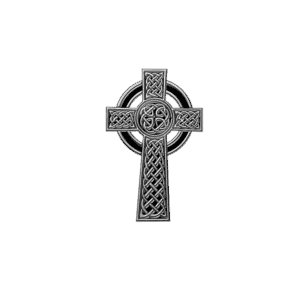May Day: Exploring the Spiritual Significance and Traditions of the Beltane Festival

Updated On: May 04, 2024 by Raghda Elsabbagh
Ever pondered over the rich history and spiritual significance of the Celtic Beltane Festival? You’re in good company. Having steeped ourselves in its ancient customs and profound meanings, we’ve unravelled intriguing insights into this extraordinary May Day ritual.
This article will take you on a journey through the vivid traditions of Beltane, from participating in merry dances around the maypole to lighting crackling bonfires under starry skies and forming an intimate connection with nature at a level that’s nothing short of sacred. So why not join us as we delve into an age-old celebration woven around our potent kinship with nature’s rhythms?
Table of Contents
The Origins and History of the Beltane Festival
The name Beltane is derived from the Gaelic May Day festival, which marks the halfway point between the spring equinox and summer solstice in the northern hemisphere. The origins of this Celtic celebration can be traced back to ancient and medieval traditions that have been revived through modern neopaganism.
Name and Etymology
Beltane” is a Gaelic festival marking the beginning of summer that was historically observed in Ireland, Scotland, and the Isle of Man. The name “Beltane” itself has fascinating origins rooted in ancient Celtic culture and language.
Beltane is believed to have derived from the Old Irish word “Beltene” or “Beltine,” which likely means “bright fire.” This etymology is supported by the Irish Gaelic words “bealtaine” or “bealtuinn,” which refer to May. This day is halfway between the Spring Equinox and Summer Solstice. The name thus suggests a connection to the prominence of fires lit during this festival, symbolising the return of life and warmth associated with summer.
Ancient and Medieval Traditions

Ancient and medieval traditions surrounding Beltane were deeply rooted in Celtic culture. This Gaelic festival, celebrated in Ireland and Scotland for centuries, marked the beginning of summer and the height of fertility in nature.
During this time, communities would gather to participate in sacred rituals and honour their connection to the land. Beltane was celebrated with bonfires, feasting, rituals, and dances to welcome the season of fertility and growth. The festival held significant importance in the agricultural calendar, marking a time of pasture rituals and fertility rites to ensure a fruitful season ahead. Iron Age rituals included lighting bonfires on hilltops to purify and protect against harmful spirits while also bringing luck for the coming year.
The association of Beltane with fire and fertility aligns with the broader Celtic worldview, where the changing seasons were deeply intertwined with spiritual beliefs and practices.
Maypole dancing was another important tradition. People would dance around a tall pole adorned with colourful ribbons, symbolising the weaving together of male and female energies.
Modern Revival and Neopaganism
In recent years, there has been a growing interest in reviving and practising the ancient Celtic traditions associated with Beltane. This revival is often seen within the Neopagan movement, which seeks to reconnect with nature and honour ancient spiritual beliefs.
Neopaganism encompasses a diverse range of contemporary religious movements inspired by or based on pre-Christian and non-Western traditions. Beltane, along with other seasonal festivals like Samhain, Imbolc, and Lughnasadh, forms an integral part of the Wheel of the Year, which many Neopagans observe.
Many modern celebrations of Beltane incorporate elements such as dancing around maypoles, lighting bonfires, and participating in rituals that celebrate the fertility of the earth. These practices not only connect individuals to their ancestral roots but also provide an opportunity for personal growth and a deeper appreciation of nature’s cycles.
For those who are interested in history and folklore or simply seeking a unique cultural experience, exploring the modern revival of Beltane can be a fascinating journey into Celtic spirituality and traditions.
When is the Beltane Festival Celebrated?
Beltane Festival is traditionally celebrated on 1 May in the Northern Hemisphere. This date marks the midpoint between the spring equinox (around 20 March) and the summer solstice (around 21 June) in the Celtic calendar. In modern times, Beltane is often observed on the night of 30 April leading into 1 May, with celebrations continuing throughout the day of 1 May.
The timing of Beltane aligns with the height of spring when nature is bursting with life, flowers are in bloom, and the days are growing longer and warmer. This festival symbolizes the transition from spring to summer, emphasizing fertility, vitality, and renewal themes. It is a time to honour the Earth’s abundance, connect with the rhythms of nature, and celebrate the awakening of life after the dormancy of winter.
Beltane is typically celebrated from 31 October to 1 November in the Southern Hemisphere, where the seasons are opposite. It marks the beginning of the warmer months and the onset of spring. The festival’s customs and rituals may be adapted to reflect the seasonal changes in this hemisphere.
Beltane holds a special place in the Wheel of the Year as a joyous occasion to embrace the energy of growth and transformation, foster community connections, and honour the sacredness of life and nature.
Celebrating Beltane: Customs and Rituals
Beltane is viewed as celebrating fertility, vitality, and the blossoming of life in nature. It marks the peak of spring and the beginning of summer when the Earth is alive with new growth and potential. Neopagans often honour this time with rituals that focus on fertility rites, honour deities associated with growth and abundance, and embrace the joyful energy of the season. Beltane is celebrated through various customs and rituals. Here are some key aspects of the Neopagan celebration of Beltane:
Dancing around the Maypole
Dancing around the Maypole is a beloved tradition associated with Beltane. People gather together, holding ribbons attached to the top of a tall pole decorated with flowers and greenery.
The ribbons create intricate patterns as they dance joyously around the pole, weaving in and out. This joyful activity symbolises the union between Earth and Sky, male and female energies coming together in harmony.
This ritual symbolises the union of male and female energies, fertility, and the weaving together of community bonds. It’s a celebration of new beginnings as spring blossoms into summer. Whether you’re a history buff or simply someone who enjoys experiencing unique customs, witnessing Maypole dancing at a Beltane festival is sure to leave you feeling uplifted and connected to nature’s rhythms.
Lighting Bonfires and May Day Fires

One of the most iconic traditions of Beltane is the lighting of bonfires and May Day fires. These fires hold deep spiritual significance in Celtic traditions. They symbolise purification, renewal, the driving away of winter’s darkness, and the returning power of the sun.
The flames are believed to protect against negative forces and bring luck and prosperity for the coming months. People gather around these fires to celebrate the arrival of summer and witness the power and transformation that fire represents.
The crackling flames create an enchanting atmosphere as people sing, dance, and engage in ancient rituals passed down through generations. When bonfires are lit, participants may jump over the flames as a form of purification and to bring luck and fertility for the coming year. May Day fires have been lit during Beltane celebrations for centuries in Ireland, Scotland, and other Celtic regions.
These traditions continue to be revived in modern celebrations such as the Beltane Fire Festival, which is held annually in Edinburgh, Scotland. Thousands of people come together to witness spectacular fire displays that evoke a sense of wonder and awe.
Spiritual Significance and Connection to Nature
Beltane holds great spiritual significance in Celtic traditions and has a strong connection to nature. It is a time to honour the sacredness of nature and our relationship with the Earth. The festival marks the increasing fertility of the land as spring turns into summer. It celebrates the vibrant growth and blossoming of nature, symbolising the union between the May Queen and the King of the Forest.
Beltane is deeply rooted in paganism, with its origins dating back centuries in Ireland and Scotland. Many Neopagans use this occasion to reconnect with the land, gather wildflowers, and create nature altars. Rituals may involve offerings to the spirits of the land and expressions of gratitude for the abundance of the Earth.
Beltane offers a unique opportunity to witness sacred rituals and connect with Celtic spirituality while immersing oneself in the beauty of nature’s rebirth during this magical time of year.
Community and Festivity
Beltane is often celebrated as a community event with gatherings, festivals, and public rituals. It is a time for people to come together, share food, music, and stories, and strengthen social bonds. These festivities embody the spirit of joy, creativity, and renewal that Beltane represents.
In conclusion, Beltane is a Celtic May Day festival with great spiritual significance. It symbolises the start of summer and celebrates nature’s fertility. With customs like dancing around the Maypole and lighting bonfires, Beltane connects us to our ancient Celtic roots and reminds us of the beauty and power of the natural world. So, let’s embrace this joyful celebration and honour our connection to nature during this special time of year.
FAQs
What is the spiritual significance of Beltane?
Beltane is a Celtic May Day festival with deep roots in Gaelic Ireland. Its spiritual significance links to seasonal festivals and Pagan rituals.
Can you tell me about Beltane customs?
Beltane customs often involve celebrating Cross Quarter Day, which, according to folklore and mythology, marks the start of summer.
How does Beltane link to Celtic mythology?
Celtic mythology is prominent in Beltane traditions. Stories and legends told during May Day celebrations are part of this rich cultural heritage.
Are holidays like May Day still celebrated today?
Yes, many people still take part in May Day celebrations by honouring old traditions or creating new ones that highlight the essence of these seasonal festivals.






